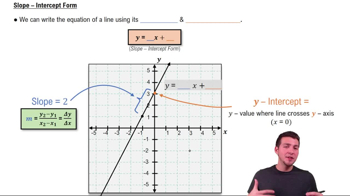Table of contents
- 0. Functions7h 52m
- Introduction to Functions16m
- Piecewise Functions10m
- Properties of Functions9m
- Common Functions1h 8m
- Transformations5m
- Combining Functions27m
- Exponent rules32m
- Exponential Functions28m
- Logarithmic Functions24m
- Properties of Logarithms34m
- Exponential & Logarithmic Equations35m
- Introduction to Trigonometric Functions38m
- Graphs of Trigonometric Functions44m
- Trigonometric Identities47m
- Inverse Trigonometric Functions48m
- 1. Limits and Continuity2h 2m
- 2. Intro to Derivatives1h 33m
- 3. Techniques of Differentiation3h 18m
- 4. Applications of Derivatives2h 38m
- 5. Graphical Applications of Derivatives6h 2m
- 6. Derivatives of Inverse, Exponential, & Logarithmic Functions2h 37m
- 7. Antiderivatives & Indefinite Integrals1h 26m
- 8. Definite Integrals4h 44m
- 9. Graphical Applications of Integrals2h 27m
- 10. Physics Applications of Integrals 2h 22m
4. Applications of Derivatives
Differentials
Problem 89
Textbook Question
More limits Evaluate the following limits.
lim_x→1 (x ln x - x + 1) / (xln²x)
 Verified step by step guidance
Verified step by step guidance1
First, identify the form of the limit as x approaches 1. Substitute x = 1 into the expression (x ln x - x + 1) / (x ln²x) to check if it results in an indeterminate form like 0/0.
Since substituting x = 1 results in an indeterminate form, apply L'Hôpital's Rule, which is used to evaluate limits of indeterminate forms. This rule states that if the limit of f(x)/g(x) as x approaches a value results in 0/0 or ∞/∞, then it can be evaluated as the limit of f'(x)/g'(x).
Differentiate the numerator f(x) = x ln x - x + 1 with respect to x. Use the product rule for the term x ln x, which gives the derivative as ln x + 1. The derivative of -x is -1, and the derivative of the constant 1 is 0.
Differentiate the denominator g(x) = x ln²x with respect to x. Again, use the product rule. The derivative of x is 1, and the derivative of ln²x is 2 ln x * (1/x) by the chain rule. Combine these to get the derivative of the denominator.
Substitute the derivatives back into the limit expression and evaluate the new limit as x approaches 1. If necessary, apply L'Hôpital's Rule again if the result is still an indeterminate form.
 Verified video answer for a similar problem:
Verified video answer for a similar problem:This video solution was recommended by our tutors as helpful for the problem above
Video duration:
5mPlay a video:
Was this helpful?
Key Concepts
Here are the essential concepts you must grasp in order to answer the question correctly.
Limits
Limits are fundamental in calculus, representing the value that a function approaches as the input approaches a certain point. They are essential for understanding continuity, derivatives, and integrals. In this context, evaluating the limit as x approaches 1 involves analyzing the behavior of the function near that point, which may require techniques like substitution or L'Hôpital's rule if the limit results in an indeterminate form.
Recommended video:

One-Sided Limits
Indeterminate Forms
Indeterminate forms occur when direct substitution in a limit leads to expressions like 0/0 or ∞/∞, which do not provide clear information about the limit's value. Recognizing these forms is crucial for applying methods such as L'Hôpital's rule, which allows for differentiation of the numerator and denominator to resolve the limit. In the given limit, substituting x = 1 results in an indeterminate form, necessitating further analysis.
Recommended video:
Guided course

Slope-Intercept Form
L'Hôpital's Rule
L'Hôpital's Rule is a powerful tool in calculus used to evaluate limits that result in indeterminate forms. It states that if the limit of f(x)/g(x) as x approaches a point yields 0/0 or ∞/∞, then the limit can be found by taking the derivative of the numerator and the derivative of the denominator. This rule simplifies the evaluation process, making it easier to find the limit of complex functions like the one presented in the question.
Recommended video:
Guided course

Power Rules







